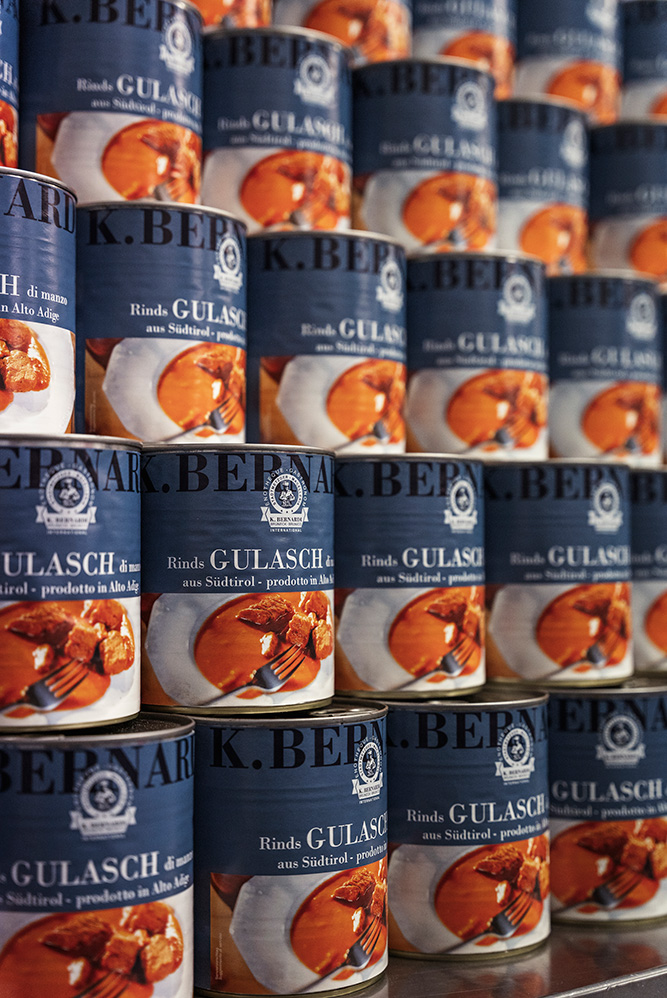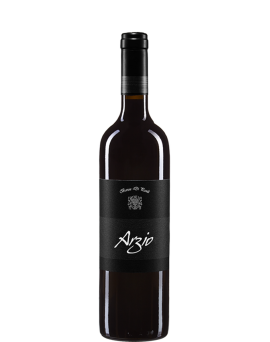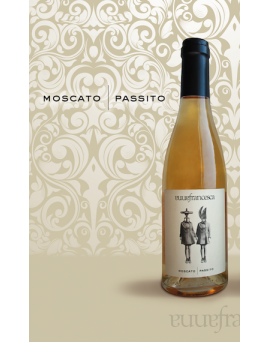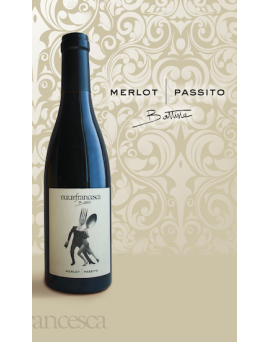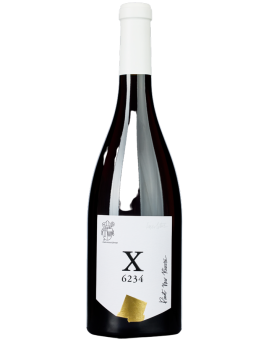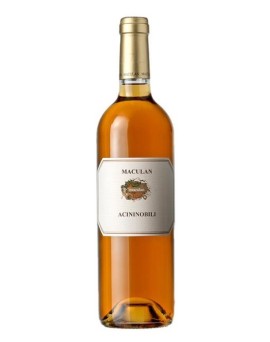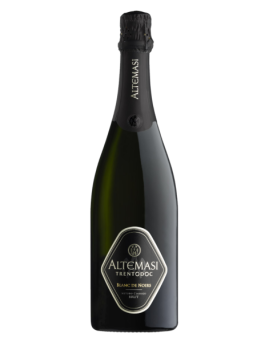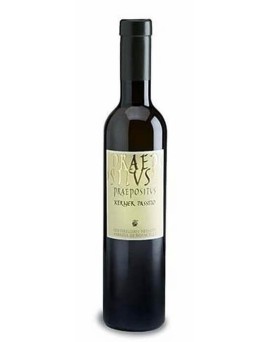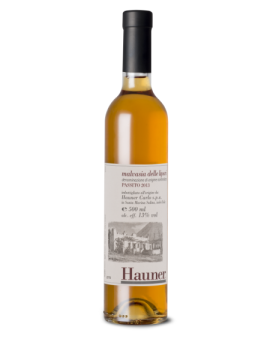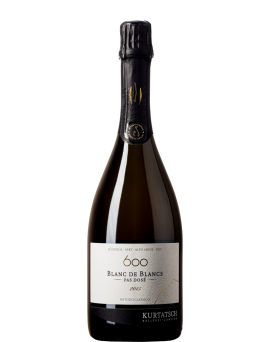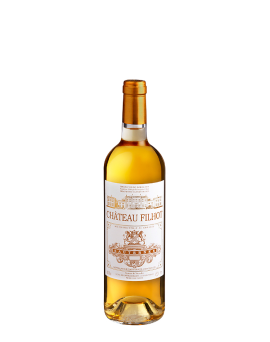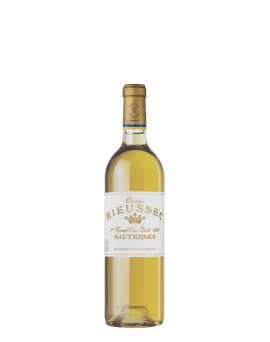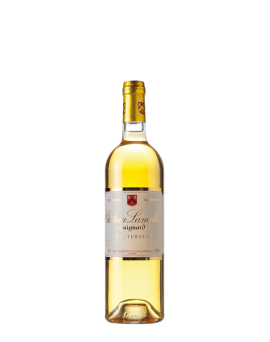Basket
0
Active filters
Sisters Passito di Moscato...
PASSITO DI MOSCATO GIALLO IGT<br /><br />Grape variety: Moscato giallo 100%<br />Training system: guyot<br />Harvest: by hand around mid-September<br />Vinification: drying of the grapes for 3 months in boxes. Minimum one year of ageing in steel tanks and at least 4 months in bottle<br />Bottle: 375 ml<br />Alcohol content: 13.5% vol<br />Residual sugar: 109 g/l<br />Acidity: 5.85 g/l<br />Colour: intense golden yellow<br />Aroma: acacia, orange blossom, candied citrus peel, yellow peach, tropical fruit and honey<br />Taste: enveloping, fruity, fresh and balanced between sweetness and acidity<br />Food pairing: dry pastries, cakes and spoon desserts, mature and blue cheeses<br />Recommended serving temperature: 10°C<br />
Price
€22.60
Battista Passito di Merlot...
BATTISTA - MERLOT IGT PASSITO WINE<br /><br />Grape variety: 100% Merlot<br />Training system: spurred cordon<br />Harvest: manual in mid-September<br />Vinification: drying of the grapes for 3 months in boxes. Minimum one year of ageing in oak barrels and at least 4 months in bottle<br />Bottle: 375 ml<br />Alcohol content: 14% vol<br />Residual sugar: 95 gr/l<br />Acidity: 5.5 g/l<br />Colour: intense dark red<br />Bouquet: rich and intense with notes of violets, red fruit jam, cherries in spirit and wood<br />Taste: deep and persistent, sweetness balanced by acidity and refined tannic texture<br />Food pairing: cocoa and dark chocolate desserts. Accompanies very mature cheeses. Excellent on its own as a meditation wine.<br />Recommended serving temperature: 10°C<br />
Price
€22.60
Pinot Nero 2018 Insolitus...
X<br />6234<br />Pinot Nero Riserva<br />South Tyrol DOC<br /><br />6234 is the first attempt at a single-vineyard wine. The slightly north-facing plot with this very number produces fine, fruity Pinot Noir grapes which, through maturation in<br />barrique barrels and amphorae, give rise to an elegant, delicate and mineral wine with subtle fruit and plenty of finesse.<br /><br />Production area: Marklhof - Girlan<br />Sea level: 450 m<br />Soil composition: loose moraine debris on porphric subsoil<br />Orientation: North<br />Grape variety: Pinot Nero<br />Vintage: 2018<br />Method of cultivation: Guyot<br />Vines/ha: 6,200<br />Age of vines: 25 years<br />Yield per hectare: 40 hl<br />Vinification: in stainless steel tanks<br />Fermentation temperature: max 28°C<br />Length of ageing: 36 months in amphora (1/3) and barrique (2/3)<br />Bottle ageing: 10 months<br />Serving temperature: 14 - 16°C<br />Shelf life: 10 years<br />Alcohol content: 13,5% vol.<br />Acidity: 5,3 g/l<br />Sugar-free extract: 29,5 g/l<br />Residual sugar: 1,0 g/l<br />
Price
€37.20
Acininobile 375ml MACULAN 1998
TYPE: Sweet wine - IGT<br />PRODUCTION AREA: the hills of Breganze.<br />GRAPE VARIETIES: 100% Vespaiola.<br />SOIL TYPE: volcanic and tuffaceous hills<br />VINIFICATION: manual and painstaking selection of grapes with Botritis cinerea in its larval form (noble rot).<br />COLOUR: shiny antique gold.<br />BOUQUET: great bouquet, intense and spicy with hints of acacia honey, dried fruit, sultanas and flint.<br />PAIRINGS: the pairing we suggest is a escalope of foie gras, but perfection is achieved in a glass, in front of the fireplace in good company!<br />FLAVOUR: sweet-not-sweet, full, elegant and sumptuous; excellent body and massive structure. The persistence is very long: an exciting experience!<br />AGEING: aged for two years in new Allier barriques, in bottle six months<br />
Price
€57.40
Blanc De Noirs ALTEMASI...
Grape varieties<br /><br />Exclusively Pinot Noir.<br />Vineyard area<br /><br />Steep slopes made up of gravelly fluvioglacial deposits in the Valle di Cembra and alluvial conoids on the Trento hill.<br />Ageing on yeasts<br /><br />Over 36 months.<br />Characteristics<br /><br />Persistent mousse with fine, continuous perlage. Straw yellow colour with golden highlights. Complex, intense bouquet. Fruity notes of peach blend with sweet hints of<br />almond and white chocolate. Enveloping on the palate, with remarkable balance and great persistence that closes with an aftertaste of candied citrus peel and redcurrant.<br />Pairings<br /><br />Risotto with smoked trout, shellfish, vitello tonnato, white fish all'isolana, smoked salmon.<br /> <br /><br /> <br />More Info<br /><br />The most known and traditional Altemasi label is the Millesimato, sparkling Traditional Method Blanc de Blancs, whose mark is the elegance obtained from the long<br />maturation on the yeasts (over 24 months). Elegance and finesse are linked to the fruity and mineral bouquet.<br />Tasting Notes<br /><br />Persistent foam with minute fine-grain perlage. Straw yellow colour, with very faint greenish tinges. Complex, highly refined nose, fruity, mineral,with light notes of bread<br />crust. Dry, pleasantly fresh on the palate, with a good, balanced structure.<br />Vineyard<br /><br />The vineyards in Trentino most ideally suited to producing sparkling wines (the hills around Trento, the Valle dei Laghi and the Brentonico Plateau).<br />Preservation<br /><br />Horizontal bottle in a cool and dark space.<br />
Price
€45.20
Praepositus Kerner Passito...
South Tyrolean Valle Isarco Kerner Passito DOC Praepositus<br /><br />Bright, sparkling golden yellow. Intense aroma of acacia honey, pickled apricots, pear compote and pineapple. A concentrated wine with pleasant<br />acidity and elegant structure.<br /><br />Analytical data:<br />Alcohol content: 10% vol.<br />Acidity: 6,20g/l<br />Residual sugar: 166g/l<br />
Price
€40.30
Malvasia Lipari DOC Passito...
Malvasia delle Lipari<br />DOC passito<br /><br />THE COMPANY<br />A passion for oenology and for Malvasiadelle Lipari as the ultimate challenge of an intense life studded with interests. This was the spirit with which Carlo Hauner embarked<br />on his adventure in the Aeolian Islands in 1963; from painter to internationally renowned designer, he started wine production after restoring ancient terracing on the island of<br />Salina. His small revolutions in the cellar fascinated experts, starting with Veronelli, and brought Hauner's Malvasia to the tables of prestigious restaurants, in Italy, France,<br />the United States, Great Britain and Japan. In the 1980s, with the construction of a modern cellar, production was expanded, and alongside the Malvasia, Salina Bianco,<br />Salina Rosso and Antonello were born, a product of great lineage aged in barriques. aged in barriques. Since 1996, it is the son Carlo Junior together with his sons Andrea<br />and Michele who run the company and produce two versions of Malvasia delle Lipari: natural and raisin.<br /><br />CHARACTERISTICS<br />VINE: Malvasia delle Lipari 95%, Corinto Nero 5%.<br />CULTIVATION : espalier<br />HARVEST : late and withering on 'Cannizzi' for 15/20 days<br />VINIFICATION : skin contact and vinification at controlled temperature<br />MATURATION : Temperature-controlled tanks<br />AGING : 6 months in bottle<br />TASTING NOTES<br />Amber colour with vivid highlights, bright and transparent, excellent consistency.<br />Rich nose with fruity hints of dried figs, dates, ripe apricots, honey and sweet spices.<br />sweet. Mouth marked by a velvety softness, sweet but not cloying, supported by great flavour. supported by great tastiness.<br />
Price
€38.90
Sekt Riserva 600 Blanc de...
600 BLANC DE BLANCS<br />South Tyrol Sparkling Wine Riserva DOC Pas Dosé 2016<br />550-650 m a.s.l., east, slope<br />Large day/night temperature differences<br />Clay, sand and gravel soils, rich in dolomite<br />Alcohol:13,0 % Vol.<br />Total acidity: 7,3 g/l<br />Residual sugar: 2,5 g/l<br />Yield per hectare: 55 hl<br />Optimum ageing: 2-5 years<br />Method of cultivation: sustainable<br /><br />Grape variety: Chardonnay<br />Vinification: gentle pressing (55% yield), fermentation 80% in stainless steel, 20% in used barriques followed by fine yeast storage and batonnage, second fermentation in<br />bottle for 55 months.<br />About the wine: The unique geological and geographical conditions in the Penon district at an altitude of 600 metres are the reason and the prerequisite for producing an<br />unmistakable top sparkling wine with a pronounced regional character. The 2014 vintage was the first 600 wines to be produced. The hand-picked Chardonnay grapes come<br />exclusively from old vines. After fermentation in the bottle, the sparkling wine matures on the yeast for 55 months. In the glass: stable and fine perlage. Fruity nuances of<br />white peach and yellow tropical fruit, some quince, spiced bread and brioche. Creamy yet firm texture, mineral and salty finish.600 BLANC DE BLANCS: The<br />uncompromising one.<br /><br />'When we start a sparkling wine project, we only do so with the aim of being among the absolute top,' says President Andreas Kofler. The goal was achieved, and the first<br />600 was pressed in 2014.<br />
Price
€40.00
Sauternes Chateau Filhot...
The Sauternes and Barsac AOCs are located south of Bordeaux, specifically in the Graves. Both AOCs date back to 1936. The area known as Sauternais comprises five<br />communes: Barsac, Bommes, Fargues, Preignac and Sauternes; while that of Barsac exclusively comprises the commune from which it takes its name. It is worth noting<br />that this specification allows Barsac producers to name their wines both Barsac and Sauternes AOC (both are often mentioned on the label), while Sauternes producers can<br />only name their wines Sauternes AOC. The area's soils are of alluvial origin with a good presence of limestone. What gives this area its unique characteristics is the<br />microclimate created by the Garonne and Ciron rivers and its proximity to the Atlantic Ocean.<br />grapes, creating a unique concentration. The varieties used for the AOC Sauternes and Barsac are: Sémillon, Sauvignon Blanc and Muscadelle.<br />The quality of the wines produced in these areas has a long history, in fact already in 1855 Napoleon III, drawing up the first classification of Crus, recognised Château<br />d'Yquem as the only Premier Cru Supérieur located outside the Medoc, followed by two other categories: Premier Cru (11 Châteaux) and Deuxième Cru (15 Châteaux).<br /><br />Château Filhot<br /><br />Varieties: Sémillon, Sauvignon Blanc, Muscadelle.<br /><br />Vineyards: The Château Filhot vineyards are located south of the village of Sauternes on the<br />southwest-facing slopes.<br /><br />Vinification: the harvest is carried out manually with several passages through the vineyards.<br />Fermentation takes place in 50-hectolitre stainless steel vats at a controlled temperature and lasts 10 to 30 days.<br />controlled temperature and lasts between 10 and 30 days depending on grape variety and concentration.<br />Subsequently (10 months after fermentation) a light filtration takes place<br />(no sterile filtration), while approximately 14 months after fermentation the<br />blending takes place. Ageing: lasts approximately 2 years in oak barrels from the forest of<br />Allier of which 1/3 new.<br /><br />Characteristics Château Filhot has hints of ginger, orange, apricot, mango and papaya. On the finish, it is fresh while showing notes of tropical fruit and<br />spicy notes.<br />
Price
€37.00
Sauternes Chateau Rieussec...
The Sauternes and Barsac AOCs are located south of Bordeaux, specifically in the Graves. Both AOCs date back to 1936. The area known as Sauternais comprises five<br />communes: Barsac, Bommes, Fargues, Preignac and Sauternes; while that of Barsac exclusively comprises the commune from which it takes its name. It is worth noting<br />that these regulations allow Barsac producers to name their wines both Barsac and Sauternes AOC (both are often mentioned on the label), while Sauternes producers can<br />only name their wines Sauternes AOC. The area's soils are of alluvial origin with a good presence of limestone; what gives this area its unique characteristics is the<br />microclimate created by the Garonne and Ciron rivers and its proximity to the Atlantic Ocean: these presences are decisive in favouring the development of pourriture noble,<br />noble rot, on the grapes, creating a unique concentration. The varieties used for the AOC Sauternes and Barsac are: Sémillon, Sauvignon Blanc and Muscadelle.<br />The quality of the wines produced in these areas has a long history, in fact already in 1855 Napoleon III, drawing up the first classification of Crus, recognised Château<br />d'Yquem as the only Premier Cru Supérieur located outside the Medoc, followed by two other categories: Premier Cru (11 Châteaux) and Deuxième Cru (15 Châteaux).<br /><br />Varieties: Sémillon, Sauvignon Blanc, Muscadelle.<br /><br />Vineyards: The Château Rieussec vineyards extend to the border between Fargues and Sauternes: it is one of the largest estates in Sauternes and Barsac and covers 93<br />hectares. The soil is gravelly-sandy-clayey.<br /><br />Vinification: Château Rieussec 1er Grand Cru Classé is aged between 18 and 26 months depending on the vintage in new barrels (50 to 55%).<br /><br />Characteristics: Château Rieussec 1er Grand Cru Classé has a beautiful, brilliant golden colour. This Rieussec has a remarkable aromatic freshness, linked to the unusually<br />high proportion of Sauvignon in the blend (25%). Aromas of citrus fruits, honey and candied apricots are accompanied by well-integrated oak notes. Citrus aromas<br />predominate on the palate, while the finish is long with a touch of spice.<br />
Price
€62.20
Sauternes Chateau Lamothe...
The Sauternes and Barsac AOCs are located south of Bordeaux, specifically in the Graves. Both AOCs date back to 1936. The area known as Sauternais comprises five<br />communes: Barsac, Bommes, Fargues, Preignac and Sauternes; while that of Barsac exclusively comprises the commune from which it takes its name. It is worth noting<br />that this specification allows Barsac producers to name their wines both Barsac and Sauternes AOC (both are often mentioned on the label), while Sauternes producers can<br />only name their wines Sauternes AOC. The area's soils are of alluvial origin with a good presence of limestone; what gives this area its unique characteristics is the<br />microclimate created by the Garonne and Ciron rivers and its proximity to the Atlantic Ocean: these presences are decisive in favouring the development of pourriture noble,<br />noble rot, on the grapes, creating a unique concentration. The varieties used for the AOC Sauternes and Barsac are: Sémillon, Sauvignon Blanc and Muscadelle.<br />The quality of the wines produced in these areas has a long history, in fact as early as 1855 Napoleon III, drawing up the first classification of Crus, recognised Château<br />d'Yquem as the only Premier Cru Supérieur located outside the Medoc, followed by two other categories: Premier Cru (11 Châteaux) and Deuxième Cru (15 Châteaux).<br /><br />Varieties: Sémillon, Sauvignon Blanc, Muscadelle.<br /><br />Vineyards: The Château Lamothe Guignard vineyards are located on two different terroirs, one of which, the most important, lies on higher plateaus with gravelly soils, while<br />the other slopes gently down the clay-gravelly slopes facing north and north-west. 90% of the grapes produced are Semillon, the remaining 10% being Sauvignon and<br />Muscadelle.<br /><br />Vinification: the Sémillon, Sauvignon Blanc and Muscadelle grapes are vinified separately; three quarters of the must, of good organoleptic quality, is obtained in the first<br />pressing, but the one with the highest sugar content is obtained from the next two. Fermentation is carried out by indigenous yeasts and lasts two to four weeks. The ageing<br />of Château Lamothe Guignard Sauternes lasts from eighteen to twenty months in oak barrels.<br /><br />Characteristics: Château Lamothe Guignard is rich, opulent on the nose. The finish is full with notes of honey.<br />
Price
€30.60

